 LIMA,Peru-Relief officials urgently appealed for more aid Thursday for earthquake survivors along Peru's shattered southern coast. Medical help, blankets and tents top the list, along with food, water and latrines. Two weeks after the devastating quake, survivors are huddling in cardboard shelters in desperate, unhygienic conditions, said Doctors Without Borders spokesman Francois Dumont, speaking from the town of Guadeloupe."We found the town completely destroyed," Dumont told The AP. "In makeshift shelters made of cardboard and bed sheets in front of their destroyed houses, families are living in cold and unhygienic conditions. They have no latrines, no drinking water and no real space to bathe.""It's like one day after the quake," said Dumont, whose group has 35 people operating mobile clinics and offering psychological counseling in the disaster zone.The magnitude-8 earthquake on Aug. 15 leveled most of Pisco, a port city 125 miles southeast of Lima, killing at least 519 people, injuring 1,366 and destroying 40,000 homes. At least 40 other people remain missing, said Alberto Visual, a director in Peru's civil defense agency.Despite substantial help initially from Latin America, Europe, Japan and the United States, some 200,000 people still need still need help to save their lives, said Elisabeth Byrs, spokeswoman for the U.N.'s humanitarian affairs office, which has appealed for US$37 million more in donations.The town of Cabeza del Toro is one of many where survivors are in dire need of help, said Mar Mora, an adviser to the U.N. World Food Program."All the houses are completely down, many of them broken, or many of them have disappeared. There are problems with water as well," Mora said. "They have not received absolutely anything until now and they are requesting medical services, tents, food, and special assistance for children."Peru estimates the cost of rebuilding these coastal towns to be US$220 million. Other estimates run much higher. President Alan Garcia also has promised financial aid and jobs to quake survivors.Garcia said help was reaching 95 percent of victims. Last week, he noted that electricity had been restored to 90 percent of the city of Ica and 60 percent of Chincha.But U.N. officials blame poor organization and coordination for a patchwork aid response, especially in rural areas. Trucks carrying aid have been spotted far from the disaster zone, raising fears of stolen donations, according to local media reports.And politicians are feuding over the relief effort. Federal lawmakers created a rebuilding fund Tuesday, but the president of the Ica province, Romulo Triveno, created a parallel fund and blasted the central government's effort as a violation of regional autonomy.The quake also badly damaged at least 173 churches, monuments and historic buildings, with about one-third completely destroyed, said the director of the National Culture Institute, Cecilia Bakula.Experts say it could have been much worse if the quake had struck closer to Lima, a metropolis of 8 million where many homes are built of adobe on sandy soil, just like the ones that crumbled in Pisco. Many of Lima's adobe buildings rise five stories tall, with walls reinforced with nothing more than "quincha," thick reeds mixed with mud.
LIMA,Peru-Relief officials urgently appealed for more aid Thursday for earthquake survivors along Peru's shattered southern coast. Medical help, blankets and tents top the list, along with food, water and latrines. Two weeks after the devastating quake, survivors are huddling in cardboard shelters in desperate, unhygienic conditions, said Doctors Without Borders spokesman Francois Dumont, speaking from the town of Guadeloupe."We found the town completely destroyed," Dumont told The AP. "In makeshift shelters made of cardboard and bed sheets in front of their destroyed houses, families are living in cold and unhygienic conditions. They have no latrines, no drinking water and no real space to bathe.""It's like one day after the quake," said Dumont, whose group has 35 people operating mobile clinics and offering psychological counseling in the disaster zone.The magnitude-8 earthquake on Aug. 15 leveled most of Pisco, a port city 125 miles southeast of Lima, killing at least 519 people, injuring 1,366 and destroying 40,000 homes. At least 40 other people remain missing, said Alberto Visual, a director in Peru's civil defense agency.Despite substantial help initially from Latin America, Europe, Japan and the United States, some 200,000 people still need still need help to save their lives, said Elisabeth Byrs, spokeswoman for the U.N.'s humanitarian affairs office, which has appealed for US$37 million more in donations.The town of Cabeza del Toro is one of many where survivors are in dire need of help, said Mar Mora, an adviser to the U.N. World Food Program."All the houses are completely down, many of them broken, or many of them have disappeared. There are problems with water as well," Mora said. "They have not received absolutely anything until now and they are requesting medical services, tents, food, and special assistance for children."Peru estimates the cost of rebuilding these coastal towns to be US$220 million. Other estimates run much higher. President Alan Garcia also has promised financial aid and jobs to quake survivors.Garcia said help was reaching 95 percent of victims. Last week, he noted that electricity had been restored to 90 percent of the city of Ica and 60 percent of Chincha.But U.N. officials blame poor organization and coordination for a patchwork aid response, especially in rural areas. Trucks carrying aid have been spotted far from the disaster zone, raising fears of stolen donations, according to local media reports.And politicians are feuding over the relief effort. Federal lawmakers created a rebuilding fund Tuesday, but the president of the Ica province, Romulo Triveno, created a parallel fund and blasted the central government's effort as a violation of regional autonomy.The quake also badly damaged at least 173 churches, monuments and historic buildings, with about one-third completely destroyed, said the director of the National Culture Institute, Cecilia Bakula.Experts say it could have been much worse if the quake had struck closer to Lima, a metropolis of 8 million where many homes are built of adobe on sandy soil, just like the ones that crumbled in Pisco. Many of Lima's adobe buildings rise five stories tall, with walls reinforced with nothing more than "quincha," thick reeds mixed with mud. http://news.yahoo.com/s/ap/20070830/ap_on_re_la_am_ca/peru_quake_1;_ylt=AiLgU_vUoBCG1uYiL07QfUanZiEB
As in the days of Noah...
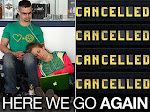
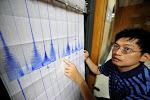
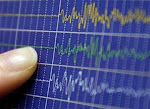
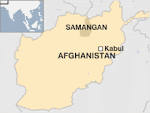






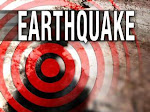
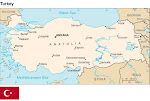
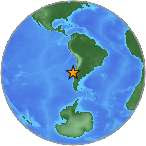




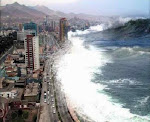

.jpg)

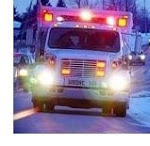
.bmp)
No comments:
Post a Comment